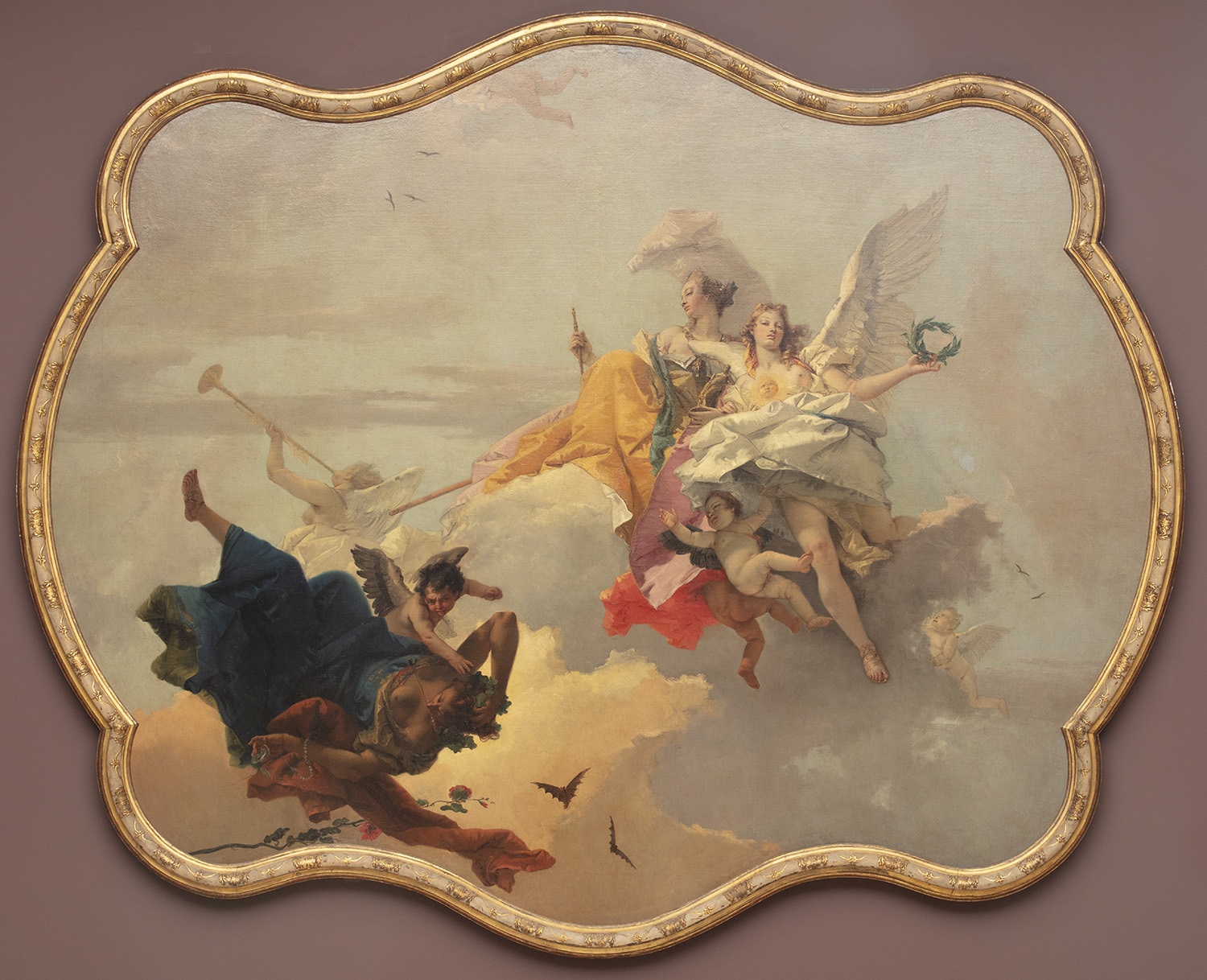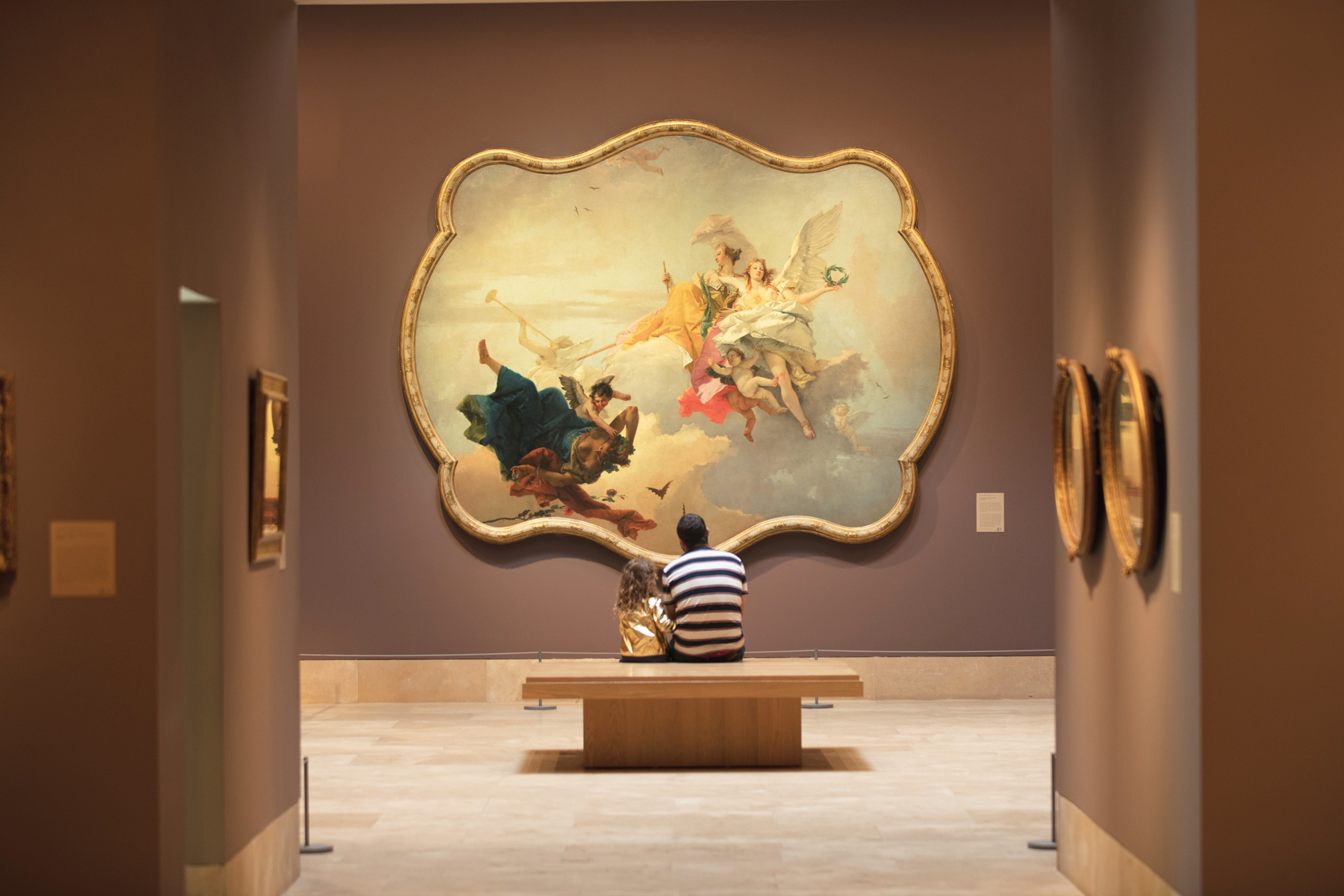Allegory of Virtue and Nobility
c. 1747–48
Giovanni Battista Tiepolo (Italian, 1696–1770)
Oil on canvas
The Norton Simon Foundation
In this monumental painting, Giovanni Battista Tiepolo depicts the triumph of Virtue and Nobility over the vice of Ignorance, all three personified by female figures. Nobility, wrapped in saffron- and rose-colored fabric, and winged Virtue, holding a crown of laurels, look down with disdain at the tumbling figure of Ignorance, who is cast into shadows by a furious cherub. To the left, Fame blows a trumpet to announce the victory. For the elite viewers for whom the work was created, intellectual interest in the allegorical subject matter was matched with delight at impressive illusionistic effect—one of Tiepolo’s characteristic talents. In its original setting, fixed to the ceiling of a grand room in the Palazzo Dolfin-Manin in Venice, the painting would have altered the perception of space, seemingly puncturing the architecture of the palace to grant access to a mythological realm.
Tiepolo’s Allegory of Virtue and Nobility (c. 1747–48): Sight Lines from Venice to Pasadena
How does the ceiling of a Venetian palace end up in Pasadena? Associate Curator Maggie Bell answers this question in an essay in the 2025 publication Recollections: Stories from the Norton Simon Museum. Bell traces the fascinating life of Allegory of Virtue and Nobility, from Giovanni Battista Tiepolo’s original commission as part of the 18th-century redecoration campaign of the Palazzo Dolfin-Manin, to the painting’s conservation treatment in a New York garage and finally to its current home at the end of the early modern European wing at the Museum. While other objects in the permanent galleries have changed around it, the Tiepolo remains a consistent sight line.

